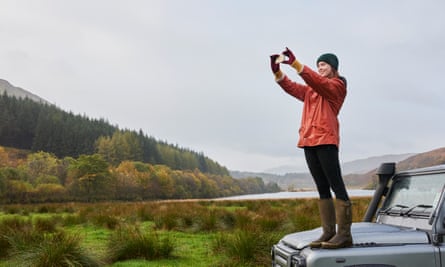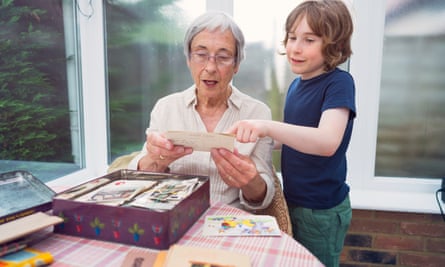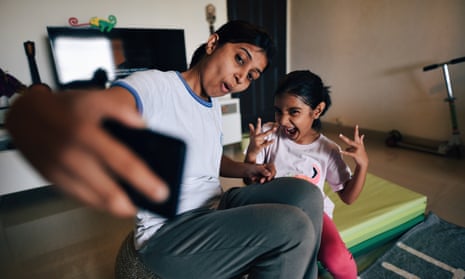If you’re anything like me, then your phone is full to bursting with unsorted photographs. If I were to die tomorrow, and my loved ones used my photo roll to better understand me, they’d be confronted by several shots of exactly the same thing, a bunch of blurred documents and a dozen or so Kathryn Hahn screengrabs. That’s no legacy to leave. We could all do with a photographic tidy-up – whether it be digital snaps on phones and computers or physical prints piled up in storage – but how?
When you should organise
Navid Razazi, a co-founder and the CEO of online photography community YouPic, suggests a little-and-often schedule, setting time aside every day to review what you have taken. “If you’re an avid photographer, you should get into a routine of organising your photos after a particular photoshoot or at the end of each day,” he says. “Doing so will prevent a mass buildup of photos, which can take hours to declutter and categorise.”
How you should organise
Once you have put aside some time to scroll through your photos on your phone or computer, you need to figure out what to do with them. James Ross, a photography tutor at City Academy, recommends initially sorting them into three sets; these can be folders, albums or piles depending on where you’re organising them. “Call them ‘Yes’, ‘no’ and ‘maybe’”, he says. “Put as many as you see fit into each. How many pictures end up in each folder is totally open, but whatever ends up in the ‘maybe’ folder will eventually go into a ‘yes’ or ‘no’ folder”.

The ‘yes’ folder
Simply put, Ross advocates keeping “the ones you like. They don’t have to be the sharpest or the most perfect. They don’t have to have straight verticals or perfect lighting. They just have to say something to you.”
The ‘no’ folder
What to get rid of? Razazi says that the bad photos should be immediately evident. “The most obvious examples are blurry shots, duplicates or accidental screenshots,” he says. “You’re also unlikely to return to an image that doesn’t immediately grab your attention or embody a particular moment. It can be good practice to follow your instincts. If you deliberate for too long, photos can often be forgotten and left in your camera roll to create clutter and take up valuable storage space on your device.”
The ‘maybe’ folder
Be careful with this one because it can become nothing but a procrastination pit. Paul Reiffer, a commercial photographer, says that “telling ourselves that we’ll go back over those later and delete the bad ones is a lie. We never do it.” If you’re confronted with a number of shots of the same thing, he says, a good rule of thumb is that “the best shot is always going to be in the last two or three of a series. Otherwise why did you keep clicking?”
What to do with what’s left
Once you have a definitive ‘yes’ folder, Razazi suggests creating albums based on “meaningful and readily identifiable criteria. These criteria will, of course, be personal to you and ultimately depend on the different styles you adopt, or the subjects you gravitate towards.” If you aren’t particularly subject-driven, he says that “you may also find it useful to categorise your photos by month, people or event, to create a navigable timeline where you can find and select specific images quickly”.

Let your phone do the work
Reiffer says that, these days, your device is usually more than capable of taking care of a lot of the work when it comes to phone pics. “Search for a location in your Google or Apple Photos app, and your phone will use the GPS data on every image to pull up results organised by time, content and even people in the image,” he says. “Better still, search for an activity – hiking, picnic, etc – and you’ll find relevant images pop on to your screen that you may have even forgotten you’d taken. Try ‘sunset’, ‘trees’ or ‘winter’ to pull up a series of shots that trigger those memories again. Struggling to remember exactly where and when you found that amazing hotdog stand in Reykjavík? Just combine a search for ‘hotdog in Iceland’ and you’ll be amazed how accurate those results can be.”
To improve the experience even more, Reiffer says that “machine learning also allows us to ‘teach’ these apps who is in a photo – confirming that a series of images contains your friend or partner will allow you to search by name in future. So, ‘Sally eating a hotdog in Iceland’ can be found in two seconds, rather than the years of organisation into folders and albums that was required in the past.”
Back the good ones up
This is important. It’s 2021, and we should all know not to trust technology, but it bears repeating. Although most phones automatically save a copy of the original photo when you touch them up, some desktop programs do not. Ross says, “If you plan on doing any post-production, save a copy of the image so that the original is always available if you wish to revisit it”. More importantly, he adds “backup your pictures – somewhere, anywhere. I’ve lost count of the amount of people I’ve met who have no backup, can’t access their cloud storage because of lost passwords or lapsed payments, or have simply lost devices”.

Don’t forget prints
If you have a stash of physical photographs, rather than digital image files, then organisation becomes even more important. You can go two ways here: you can be like my mum, and stuff decades of photos into a busted-open shoebox – or you can take a bit more care over it. Luckily, the philosophy is the same as digital organisation. First declutter, getting rid of any shots that have a thumb over the lens or show people blinking. Then choose how you want to organise; some people like to go chronological, others prefer to sort by subject. Once this is done, you can either scan them into a computer, or buy some plastic photo storage boxes and categorise them with index cards.

Comments (…)
Sign in or create your Guardian account to join the discussion